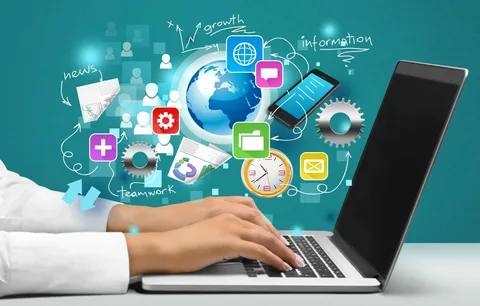Technology has become an integral part of education, revolutionizing the way students learn and interact with information. For hearing impaired students, technology offers unique opportunities to overcome communication barriers and access educational resources more effectively.
From specialized devices to innovative software applications, technology plays a crucial role in facilitating learning and fostering academic success for students with hearing impairments. This article will explore the various ways in which technology can assist in the learning process for hearing impaired students, empowering them to reach their full potential in the classroom and beyond.
Table of Contents
1. Assistive Listening Devices
Assistive listening devices (ALDs) is a type of learning for hearing impaired children designed to enhance sound clarity and amplify speech for individuals with hearing impairments. These devices work by reducing background noise and transmitting audio directly to the user’s ears, making it easier to understand spoken language in various environments, including classrooms.
One example of an ALD is a personal FM system, which consists of a transmitter microphone worn by the teacher and a receiver worn by the student. The microphone picks up the teacher’s voice and transmits it wirelessly to the student’s receiver, allowing them to hear the teacher more clearly without interference from surrounding noise.
Another type of ALD is an induction loop system, which utilizes electromagnetic signals to transmit audio directly to hearing aids or cochlear implants equipped with telecoil technology. By eliminating the need for additional devices, induction loop systems provide seamless access to amplified sound for hearing impaired students in classrooms, lecture halls, and other public spaces.
2. Closed Captioning and Subtitles
Closed captioning and subtitles are indispensable tools for ensuring accessibility to audiovisual content for individuals with hearing impairments. These features display text on the screen synchronized with spoken dialogue, providing visual cues that enable hearing impaired students to follow along with video presentations, online lectures, and educational videos.
Technological advancements have significantly improved the accuracy and availability of closed captioning and subtitles across various platforms and devices. Many streaming services, educational websites, and multimedia applications now offer built-in captioning options, empowering hearing impaired students to engage with educational content independently and effectively.
In addition, automatic speech recognition (ASR) technology has revolutionized real-time captioning for live events and video conferencing. By transcribing spoken words into text in real time, ASR ensures that hearing impaired students have equitable access to classroom discussions, guest lectures, and remote learning opportunities, enhancing inclusivity and participation in educational settings.
3. Sign Language Interpretation
For students who rely on sign language as their primary means of communication, technology plays a crucial role in facilitating access to sign language interpretation services, both within and beyond the classroom.
Video conferencing platforms like Zoom and Skype offer support for remote sign language interpretation through live video calls. This feature enables hearing-impaired students to actively participate in class discussions, presentations, and collaborative activities alongside their peers.
Additionally, the development of mobile applications and software programs has provided on-demand access to a variety of sign language resources. These resources include sign language dictionaries, tutorials, and interactive lessons, empowering hearing-impaired students to enhance their sign language proficiency independently.
By utilizing these technological tools, students can improve their communication skills and engage more effectively in both academic and social environments.
4. Visual Learning Tools
Visual learning tools harness graphics, animations, and interactive simulations to deliver information in a visual format, enhancing accessibility and engagement for hearing impaired students. Digital whiteboards, educational apps, and multimedia presentations empower educators to craft dynamic lesson materials that accommodate diverse learning styles and preferences.
In addition, augmented reality (AR) and virtual reality (VR) technologies offer immersive learning experiences that heighten sensory perception and spatial awareness. These technologies integrate visual and auditory cues within interactive environments, providing hearing impaired students with alternative avenues to grasp abstract concepts and explore virtual realms. By leveraging these innovative tools, educators can create inclusive learning environments that foster deeper understanding and participation among all students, regardless of their auditory abilities.
5. Communication Apps and Assistive Devices
Communication apps and assistive devices play a crucial role in empowering hearing impaired students to effectively communicate with teachers, peers, and classmates across academic and social contexts.
Text-based messaging platforms like email, instant messaging, and social media enable real-time written communication, facilitating participation in group discussions, collaboration on projects, and reaching out to instructors for assistance.
In addition to text-based communication, speech-to-text software and voice recognition technology offer valuable support by converting spoken language into written text. This functionality allows hearing impaired students to engage verbally with individuals who may not be proficient in sign language, bridging the communication gap between spoken and written language.
These tools not only promote inclusivity but also enhance accessibility in educational environments, ensuring that all students can actively participate and communicate effectively regardless of their hearing abilities.
Harnessing Technology to Empower Hearing Impaired Learners
Technology has the power to transform the educational experience for hearing impaired students, providing them with the tools and resources they need to succeed in the classroom and beyond. From assistive listening devices and closed captioning to sign language interpretation and visual learning tools, technology offers a wide range of solutions to address the unique needs of hearing impaired learners.
By leveraging the capabilities of modern technology, educators can create inclusive learning environments where all students have equal access to educational opportunities and resources. Through ongoing research and innovation, we can continue to harness the power of technology to empower hearing impaired students and promote academic excellence and lifelong learning for all.
